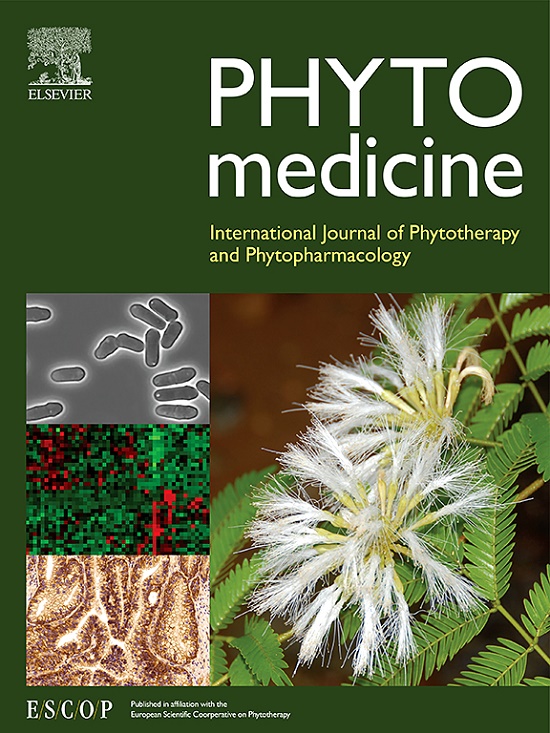Sauchinone preserves cardiac function in doxorubicin-induced cardiomyopathy by inhibiting the NLRP3 inflammasome
IF 6.7
1区 医学
Q1 CHEMISTRY, MEDICINAL
引用次数: 0
Abstract
Background
Doxorubicin (Dox)-induced cardiomyopathy (DIC) is characterized by severe myocardial damage that can progress to dilated cardiomyopathy and potentially lead to heart failure. No effective prevention or treatment strategies are available for DIC. Sauchinone, a diastereomeric lignan isolated from Saururus chinensis, is known for its notable anti-inflammatory effects. However, a paucity of research on sauchinone in relation to heart disease exists, particularly regarding its role in DIC, which remains unclear.
Purpose
This study aimed to assess the therapeutic potential of sauchinone in alleviating cardiac injury and elucidate its potential molecular mechanism in DIC.
Methods
Male C57BL/6J mice were used to construct chronic and acute DIC models in vivo. The mice were administered sauchinone intragastrically concurrently with the first injection of Dox to evaluate the therapeutic effect of sauchinone on DIC. H9c2, a rat cardiomyocyte cell line, was treated with various concentrations of sauchinone in conjunction with Dox to assess the protective effects of sauchinone on cardiomyocyte injury in vitro.
Results
Supplementation with exogenous sauchinone mitigated Dox-induced cardiac atrophy, cardiac fibrosis, and ventricular remodeling, while preserving cardiac function. Sauchinone reduced Dox-induced abnormal apoptosis both in vitro and in vivo. Additionally, sauchinone restored mitochondrial function and decreased reactive oxygen species levels, which may be attributed to its activation of nuclear factor erythroid 2-related factor 2 (NRF2) signaling, thereby attenuating Dox-induced oxidative damage. Furthermore, sauchinone significantly inhibited the activation of the NOD-like receptor thermal protein domain associated protein 3 (NLRP3) inflammasome and reduced the cardiac infiltration of inflammatory factors, thereby alleviating oxidative stress and inhibiting the progression of DIC. The NLRP3 agonist nigericin abolished DIC progression, while the NLRP3 antagonist MCC950 further enhanced the beneficial effects of sauchinone on DIC progression both in vivo and in vitro.
Conclusions
The key novel finding of the present study is that the use of sauchinone, a diastereomeric lignan isolated from Saururus chinensis, effectively limits the progression of DIC. Specifically, sauchinone not only alleviates Dox-induced chronic cardiac injury but also significantly delays the progression of acute DIC. Mechanistically, inactivation of the NLRP3 inflammasome and NRF2-mediated antioxidant pathways have been identified as two critical signaling pathways regulated by sauchinone, which plays a vital role in blocking the progression of DIC. Sauchinone holds promise as a potential therapeutic approach for DIC or dilated cardiomyopathy.

求助全文
约1分钟内获得全文
求助全文
来源期刊

Phytomedicine
医学-药学
CiteScore
10.30
自引率
5.10%
发文量
670
审稿时长
91 days
期刊介绍:
Phytomedicine is a therapy-oriented journal that publishes innovative studies on the efficacy, safety, quality, and mechanisms of action of specified plant extracts, phytopharmaceuticals, and their isolated constituents. This includes clinical, pharmacological, pharmacokinetic, and toxicological studies of herbal medicinal products, preparations, and purified compounds with defined and consistent quality, ensuring reproducible pharmacological activity. Founded in 1994, Phytomedicine aims to focus and stimulate research in this field and establish internationally accepted scientific standards for pharmacological studies, proof of clinical efficacy, and safety of phytomedicines.
 求助内容:
求助内容: 应助结果提醒方式:
应助结果提醒方式:


